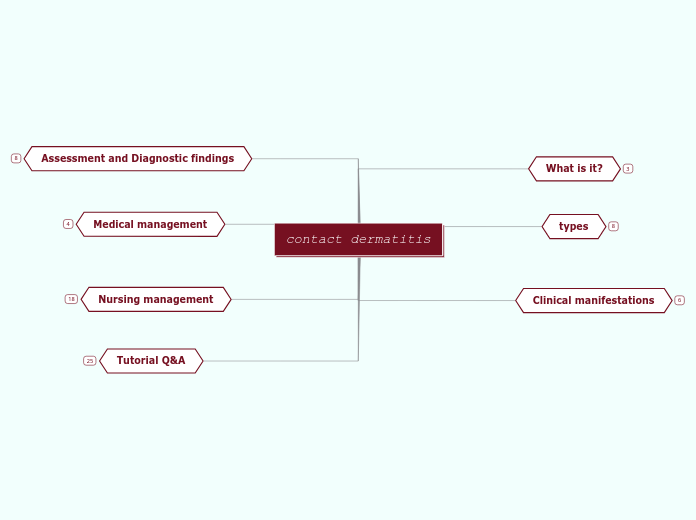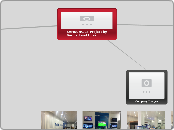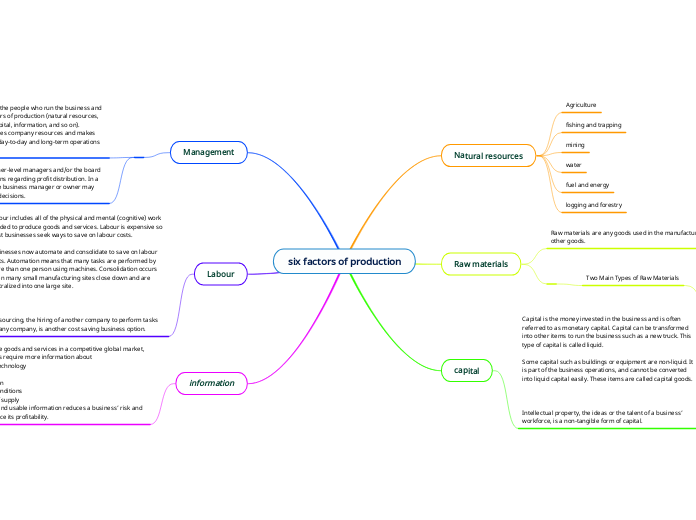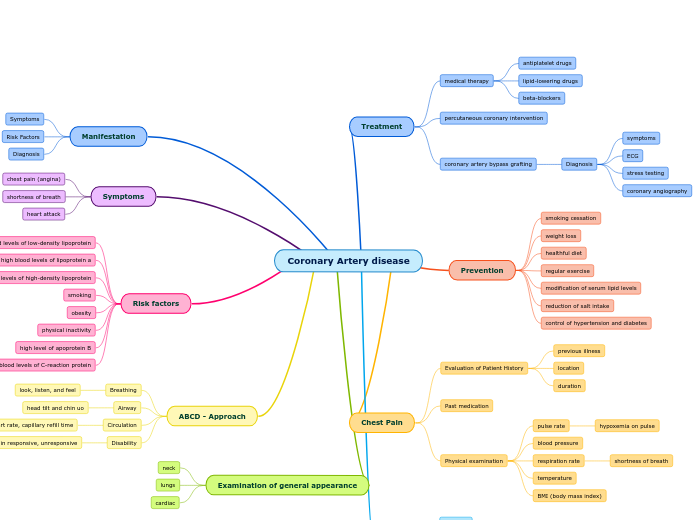contact dermatitis
Tutorial Q&A
Q5: Peter is 12 years old has taken triamcinolone 0.1% cream for long periods of time for contact dermatitis and has been applying the cream thickly to large areas of his body. His mother reports to his doctor that Peter’s face has become rounder and puffy, and that Peter has noticed weakness in his arms.
What condition do you think Peter may have?
D. Unknown condition
C. Hyperthyroidism
B. Cushing's syndrome
A. Rosacea
Q4: Sally has irritant contact dermatitis. Which of the following statements shows that Sally needs more education about her condition:
D. “I will avoid scratching my skin”
C. “I will choose fragrance free soaps”
B. “I will wear the same pair of gloves all day during my working day to protect my skin and I will remove the gloves after I finish work”
A. “I will wash my skin immediately after exposure to possible irritants”
Q3: In the research article by Alluhayyan et al (2020) On Occupational – related contact dermatitis (see VLE for article) what part of the body was most reported by participants regarding skin changes?
D. Nasal bridge
C. Cheeks
B. Wrists or forearms
A. Hands
Q2: Tom asks the nurse how long he will be wearing the patch tests on his back for. Which is the correct response from the nurse?
D. “The patches are usually removed after one month”
C. “The patches are usually removed after seven days”
B. “The patches are normally removed after 48 hours”
A. “The patches are normally removed after 4 hours”
Q1: Tom will be having a patch test this week. Which of the following statements indicate that Tom needs more education about the patch test procedure?
D. “I will be able to continue with strenuous activity and sports during the patch test”
C. “I will wear dark colored clothing instead of light colored clothing”
B. “I will avoid swimming during the days of the patch testing”
A. “I will avoid exposing my back to sunlight during the patch testing”
Nursing management
explain how to apply the ointment
Seek medical advice if not improving
Avoid touching the skin with the tip of ointment
Apply thin firm of ointment and rub it gently
Wash and dry hand and affected area
education about
Prevent recurrent of the problem
change them and strict to hand hygiene
cool water and use fragrance free soaps , and then dry the skin and then apply moisturizer
Wear protective equipment
strict to the treatment
lubricate the skin
avoid the allergen or irritant
Protect the integrity of the skin
dry the skin after washing
moisturizing by creams and water.
how to minimize the severity of symptoms
moisturize the skin, avoid rubbing and avoid exposure to allergen or irritant.
Medical management
• Diphenhydramine tab. 25mg, PO
an antihistamine used to relive allergy symptoms such as itching, rash and runny nose.
• Triamcinolone acetonide 0.1% ointment
a medium to strong potency corticosteroids used to reduce redness , swelling and itching .
Assessment and Diagnostic findings
history
use of skin care products
any identifiable relationship to work environment
date of onset
patch test
A positive skin test means that the client is allergen to the substance. A negative skin test means he probably aren’t allergic to the allergen.
involves application of antigens on the skin 48h, and then to assess the final reading in 96h because of possibility of delayed reactions.
Thin-layer Rapid Use Epicutaneous test
Clinical manifestations
caused by the inflammation and the inflammatory mediators
skin thickening, hardening, and scaling
skin lesions (vesicles and papules)
erythema(redness) and edema
burning
itching
types
photo allergic
allergenic contact + light exposure
Photo-toxic
irritant + sunlight + chemical
Irritant
contact with substances the chemically or physically damages the skin
Allergic
contact of skin and allergenic substances
What is it?
caused by
contact with an exogenous substance that elicits an allergic response
a type IV delayed hypersensitivity reaction









